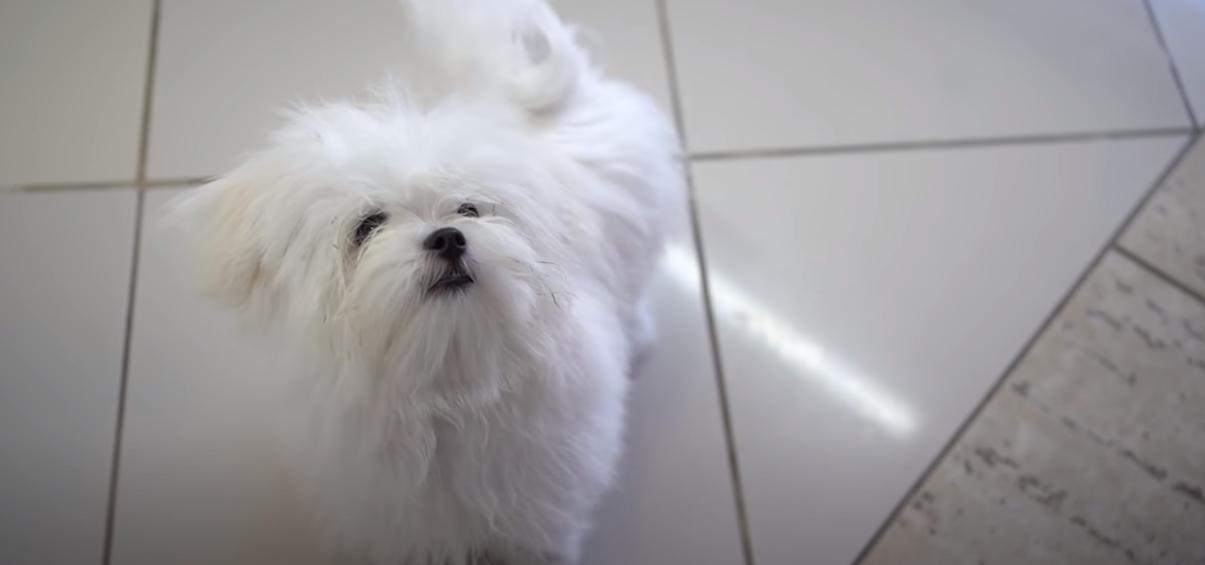Why Are Maltese Hypoallergenic? (Answered)
Key Takeaways
- Maltese dogs are hypoallergenic because they don’t shed, secrete less of the glycoprotein that is known to cause allergic reactions, and their small size may also contribute to fewer allergies caused by shed dander.
Do you suffer from allergies but still want a furry friend by your side? A Maltese may be the perfect pup for you! These toy dogs are hypoallergenic, meaning they don’t shed and produce less of the glycoprotein that can cause allergic reactions.

What is the difference between a Maltese and other dogs?
Maltese dogs are a breed of toy dog that has been popular for centuries. They are known for their playful and friendly personality, as well as their ability to adapt to new environments. Maltese dogs originated on the island of Malta, where they were bred as companion animals. Today, Maltese dogs are found all over the world and are beloved by many people.
While Maltese dogs share some similarities with other breeds of dogs, there are also some significant differences. One of the most notable difference is in size; Maltese dogs typically weigh less than 10 pounds, while other breeds can weigh much more. Another difference is in coat color; while most Maltese have white fur, other breeds may have a variety of colors in their coats. Finally, Maltese dogs tend to be less active than other breeds; while they enjoy playing and being around people, they don’t need hours of exercise every day like some other breeds do.
How do Maltese compare to other hypoallergenic breeds?
The Maltese is a small hypoallergenic dog breed, well known for its lively, playful nature. Bred as a companion dog, this small non-shedding dog is an excellent choice for those with allergies. Maltese dogs are typically very gentle and loving, making them great companions for all types of people. So, how do they compare to other hypoallergenic breeds?
Well, firstly, the Maltese is one of the oldest breeds in existence – they can be traced back over 2,800 years! This makes them a particularly popular choice for those looking for a ‘traditional’ hypoallergenic breed. They are also one of the smallest hypoallergenic breeds, weighing in at just 6-9 pounds on average. This makes them ideal for city dwellers or anyone who doesn’t have a lot of space in their home.
One area where the Maltese really shines compared to other hypoallergenic breeds is in their coat care. The Maltese has a long, silky coat that requires regular grooming to prevent mats and tangles from forming. However, many people find the grooming process to be therapeutic and relaxing – it’s definitely not something that should be considered a chore! Additionally, because the Maltese does not shed (or sheds very little), there’s no need to worry about pesky pet hair around your home.
What are the benefits of having a hypoallergenic dog?
When it comes to hypoallergenic dogs, the Maltese is a breed that often comes to mind. And for good reason – these beautiful pups produce less pet dander than most other breeds, making them a great choice for people with allergies. But there are other benefits of owning a hypoallergenic dog as well, including:
- 1. fewer sneezes and watery eyes: Because they produce less pet dander, Maltese owners can enjoy spending time with their furry friend without having to worry about sneezing or watering eyes.
- 2. minimal Shedding: One of the best things about Maltese is that they don’t shed very much. This means you won’t have to deal with piles of fur around your home (or on your clothes!) and you can say goodbye to those pesky hairballs.
- 3. low Maintenance grooming: Thanks to their minimal shedding and lack of doggy odor, Maltese require very little in the way of grooming – brushing once or twice a week is usually all that’s needed to keep their coat looking its best.
Are there any downsides to owning a Maltese?
Maltese dogs are one of the most popular breeds in the world. They are known for their beautiful white coats and friendly personalities. While Malteses make great companions, there are some downsides to owning one of these dogs.
One downside to owning a Maltese is that they can be difficult to housebreak. This breed is notorious for being stubborn when it comes to potty training. If you’re not patient and consistent with your training methods, it can take a long time to get your Maltese fully housetrained.
Another con of owning a Maltese is that they tend to bark excessively. This breed is very vocal and will often bark at anything that catches their attention. If you live in an apartment or other close quarters, this constant barking can be disruptive and annoying for both you and your neighbors.
Finally, Malteses often suffer from separation anxiety when left alone. This means that they may bark, whine, or pace around nervously when left by themselves. If you work long hours or travel frequently, owning a Maltese may not be the best option for you since they require so much attention and care.

How do you care for a Maltese?
The Maltese is a small, toy-sized dog breed that has its origins in the Mediterranean island of Malta. These dogs are known for their long, silky white coats and their friendly, outgoing personalities. While they make great companion animals, it’s important to remember that the Maltese is still a dog and needs proper care and attention in order to stay healthy and happy. Here are some tips on how to care for your Maltese:
- 1. Make sure to take your Maltese to the vet at least once every six to twelve months for routine checkups and vaccinations. This breed is susceptible to allergies, so it’s important to keep an eye out for any potential problems.
- 2. Brush your Maltese’s coat regularly with a soft bristled brush to prevent mats and tangles from forming. These dogs have very delicate skin, so be careful not to use too much force when brushing. You may also want to consider giving your Maltese a monthly bath using a mild hypoallergenic shampoo designed specifically for dogs with sensitive skin.
- 3.Provide plenty of toys and chew treats for your Maltese in order to help keep their teeth clean and strong. This breed is prone to dental problems, so regular tooth-brushing (with doggy approved toothpaste) is essential as well.
- 4.Because of their small size, Malteses are susceptibleto injury if they jump or fall from high places (like furniture or stairs).
What is the history of the Maltese breed?
Maltese dogs are one of the oldest breeds in existence, with a history that dates back thousands of years. They were originally found in the Mediterranean region, with Sicily, Egypt and southern Europe all being possible places of origin. However, most historians believe that Malta is where the breed developed.
The Maltese is a small “bichon” type dog, which means that he is a member of a group of dogs that have similar characteristics. These dogs are all small in size, with long hair and a cheerful disposition. The Maltese specifically is known for his silky white coat, which hangs down to the ground and covers his eyes. This unique feature gives him a gentle and regal appearance.
While the exact origins of the Maltese breed are unknown, we do know that they have been around for a very long time. In fact, there are references to them in ancient texts dating back as far as Aristotle! It’s clear that they were once prized possessions among the wealthy and elite class – something that has certainly not changed today. Even though we may not know exactly where they came from or how they got their start, one thing is for sure: the Maltese breed is truly unique and has a fascinating history behind it.
Are there any famous or notable Maltese dogs?
Maltese dogs have a long and storied history, dating back thousands of years. They were once the favorite companion of royalty and famous celebrities, and continue to be one of the most popular dog breeds today.
Maltese dogs are believed to originate from the Mediterranean island of Malta. They were first mentioned in literature by Aristotle in 350 BC, and were later brought to Europe by Roman soldiers. Maltese dogs quickly became a favorite of European nobility, and were often given as gifts to royalty. Queen Victoria was particularly fond of them, and owned several Maltese dogs during her lifetime.
Today, Maltese dogs are still prized for their affectionate nature and cute appearance. They make great companions for people of all ages, and continue to be one of the most popular dog breeds around the world.
Frequently Asked Questions
Are Maltese dogs really hypoallergenic?
Maltese dogs are a popular choice for people with allergies, as they are often advertised as being hypoallergenic. However, this is not always the case. Some people may be allergic to Maltese dogs, even if they do not have allergies to other dogs. It is important to consult with a doctor or allergist before getting a Maltese dog if you have allergies.
Why are Maltese so special?
Maltese are one of the most popular dog breeds for a reason. They are gentle, affectionate, intelligent, responsive and trustworthy. A good family dog, Maltese are lively, playful, vigorous and they generally enjoys learning tricks. They can be snappy with raucous children but their petite build belies their fearless presence.
What is the most hypoallergenic dog?
There are a number of different breeds of dogs that are considered to be hypoallergenic, meaning they produce less of the protein that is responsible for triggering allergies in people. The American Kennel Club (AKC) lists miniature schnauzers, poodles, Portuguese water dogs, soft coated wheaten terriers, Spanish water dogs and standard schnauzers as being among the best breeds for allergy sufferers. In addition, Xoloitzcuintlis (also known as Mexican hairless dogs) are also considered to be hypoallergenic.
So which of these breeds is the most hypoallergenic? That really depends on the individual dog and what kind of allergies you have. For example, if you’re allergic to the dander (dead skin cells) that all dogs produce but can tolerate small amounts of fur, then a miniature schnauzer or poodle might be a good choice for you. On the other hand, if you’re allergic to both dander and fur/hair, then a Portuguese water dog or Xoloitzcuintli would likely be your best bet since they don’t shed much (if at all). Ultimately it’s important to spend time around any breed of dog before making a commitment to owning one so that you can see how your allergies react.
What does hypoallergenic mean in dogs?
A hypoallergenic dog breed is a dog breed that is supposedly more compatible with allergic people than other breeds. The term “hypoallergenic” does not mean that these dogs do not produce allergens, but rather that they produce fewer allergens than other breeds. There are many different hypoallergenic dog breeds, and each one has its own unique set of characteristics. Some of the most popular hypoallergenic dog breeds include the Bichon Frise, the Chinese Crested, and the Maltese.
While there is no such thing as a completely allergy-free dog, hypoallergenic dogs may be a good choice for people with allergies. If you are considering getting a hypoallergenic dog, it is important to talk to your allergist or doctor first to see if you are truly allergic to dogs and to find out which breed might be best for you.
